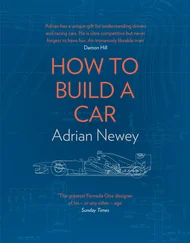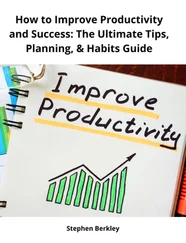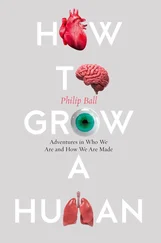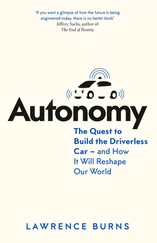Eyal, Nir - Hooked - How to Build Habit-Forming Products
Здесь есть возможность читать онлайн «Eyal, Nir - Hooked - How to Build Habit-Forming Products» весь текст электронной книги совершенно бесплатно (целиком полную версию без сокращений). В некоторых случаях можно слушать аудио, скачать через торрент в формате fb2 и присутствует краткое содержание. Год выпуска: 2014, Издательство: Nir Eyal, Жанр: Старинная литература, на английском языке. Описание произведения, (предисловие) а так же отзывы посетителей доступны на портале библиотеки ЛибКат.
- Название:Hooked: How to Build Habit-Forming Products
- Автор:
- Издательство:Nir Eyal
- Жанр:
- Год:2014
- ISBN:нет данных
- Рейтинг книги:5 / 5. Голосов: 1
-
Избранное:Добавить в избранное
- Отзывы:
-
Ваша оценка:
- 100
- 1
- 2
- 3
- 4
- 5
Hooked: How to Build Habit-Forming Products: краткое содержание, описание и аннотация
Предлагаем к чтению аннотацию, описание, краткое содержание или предисловие (зависит от того, что написал сам автор книги «Hooked: How to Build Habit-Forming Products»). Если вы не нашли необходимую информацию о книге — напишите в комментариях, мы постараемся отыскать её.
Hooked: How to Build Habit-Forming Products — читать онлайн бесплатно полную книгу (весь текст) целиком
Ниже представлен текст книги, разбитый по страницам. Система сохранения места последней прочитанной страницы, позволяет с удобством читать онлайн бесплатно книгу «Hooked: How to Build Habit-Forming Products», без необходимости каждый раз заново искать на чём Вы остановились. Поставьте закладку, и сможете в любой момент перейти на страницу, на которой закончили чтение.
Интервал:
Закладка:
As we have just seen, users store value in the service during the Investment Phase. But one other key opportunity found in the Investment Phase greatly increases the likelihood of users returning.
Loading the Next Trigger
As described in chapter two, triggers bring users back to the product. Ultimately, habit-forming products create a mental association with an internal trigger. But to create the habit, users must first use the product through multiple cycles of the Hook Model. Therefore, external triggers must be used to bring users back around again to start another cycle.
Habit-forming technologies leverage the user's past behavior to initiate an external trigger in the future. Users set future triggers during the Investment Phase, providing companies with an opportunity to re-engage the user. Next, we will explore a few examples of how companies have helped load the next trigger during the Investment Phase.
Any.do
User retention is a challenge for any business, but especially for consumer mobile applications. According to a study by a mobile analytics firm, 26 percent of mobile apps in 2010 were downloaded and used only once. [cviii]Further data suggests people are using more applications but engaging with them less frequently. [cix]
Any.do is a simple mobile task management app used to record to-do items such as picking up dry cleaning, restocking the fridge with milk or calling Mom. Recognizing the challenge of retaining fickle mobile consumers, the app is designed to direct users to invest early on. During the first use of the app, Any.do elegantly teaches how to use the product (figure 34). The trigger comes in the form of the app’s clear, easy-to-follow instructions. The follow-on action is doing what the app tells the user to do. The variable rewards come in the form of a congratulatory message and satisfaction of mastering the app.
Then comes the investment. Newcomers are instructed to connect the app to their calendar service, granting Any.do access to the user’s schedule. In doing so, users give the app permission to send a notification after the next scheduled meeting ends. This external trigger prompts users to return to the app to record a follow-up task from the meeting they just attended. In the Any.do scenario, the app sends an external trigger to users at the moment when they are most likely to experience the internal trigger of anxiety about forgetting to do a task after a meeting. The Any.do app has anticipated a need and sets users up for success.

Figure 34
Tinder
In mid-2013, a hot new company entered the hyper-competitive online dating market. Tinder quickly captured the attention of millions of people looking for love with a simple interface, generating 3.5 million matches from 350 million swipes each day. [cx]After launching the mobile app and logging-in with Facebook, users browse profiles of other singles. Each potential match is presented as a card. Swipe left if you are not interested and right if that special someone catches your fancy (figure 35). If both parties express interest, a match is made and a private chat connects the two potential lovebirds.
By simplifying the investment of sorting through potential mates, Tinder makes loading the next trigger more likely with each swipe. The more swipes, the more potential matches are made and of course, each match sends notifications to both interested parties.

Figure 35
Snapchat
As of June 2013, a popular photo sharing app called Snapchat boasted of five million daily active users collectively sending over 200 million photos and videos daily. [cxi]This tremendous engagement means an average Snapchat user sends 40 pics every day!
But why are users so in love with Snapchat? In large part, its success can be attributed to the fact that users load the next trigger every time they use the service. Snapchat is more than a way to share images. It is a means of communication akin to sending an SMS message — with the added bonus of a built-in timer that can cause the message to self-destruct after viewing, based on the sender’s instructions. Users pass through the Investment Phase of the Hook Model each time they send a selfie, doodle, or goofy photo. Each photo or video sent contains an implicit prompt to respond and the Snapchat interface makes returning a pic incredibly easy by double tapping the original message to reply. The self-destruct feature encourages timely responses, leading to a back-and-forth relay that keeps people hooked into the service by loading the next trigger with each message sent.
Like many social networks, Pinterest loads the next trigger during the Investment Phase of the hook. For many of the site’s 50 million monthly users, the online pinboard replaced the habit of browsing fashion-focused websites — and before the web, flipping through magazines and dog-earing favorite pages. [cxii]
The internal trigger for users is often boredom, for which the site offers a quick cure. Once registered, the only action required of users is to start scrolling as Pinterest showcases a wealth of variable rewards. First, because Pinterest is a socially-curated collection of interesting items, the site displays a powerful intermittent reward surrounding the hunt for objects of desire, even if they are only images. The site also provides a means of communicating with friends and people who share similar tastes. The Rewards of the Tribe come from the variability of posting images as a communication medium. A user might be curious to know what a friend has pinned not only because of the image itself, but because of her relationship with the pinner.
Finally, Pinterest users invest in the site every time they pin an image of their own, re-pin someone else’s image, comment on, or like a piece of content on the site (figure 36). Each of these tiny investments gives Pinterest data it can use to tailor the site to each user’s individual taste, it also loads the next trigger. Each pin, re-pin, like, or comment gives Pinterest tacit permission to reach back out to the user with a notification when someone else contributes to the thread, triggering the desire to visit the site again to learn more.

Figure 36
***
Pinterest clearly demonstrates the four stages of the Hook Model. It is a seamless flow, from the itch of the internal trigger that moves users to the intended action, through the variable reward, and finally to the investment, which also loads the next external trigger. Pinterest users move through the Hook cycle from beginning to end, and then happily return to the starting point for another go ‘round.
In this chapter, we have learned how an investment in the product serves as the string that pulls the user back. To do this, the habit-forming technology increases the value of the product with each pass through the Hook. Through successive cycles of the Hook Model, users increase their affinity for the experience. They increasingly come to rely on the product as the solution to their problems until finally, the new habit — and routine — is formed.
The more users invest in a product through tiny bits of work, the more valuable the product becomes in their lives and the less they question its use. Of course, users do not stay hooked forever. Invariably, the next big thing will come along and provide a better, more compelling hook. However, by creating habits fueled by investments in a product or service, companies make switching to a competitor difficult. User habits are hard to break and confer powerful competitive advantages to any company fortunate enough to successfully create them.
Читать дальшеИнтервал:
Закладка:
Похожие книги на «Hooked: How to Build Habit-Forming Products»
Представляем Вашему вниманию похожие книги на «Hooked: How to Build Habit-Forming Products» списком для выбора. Мы отобрали схожую по названию и смыслу литературу в надежде предоставить читателям больше вариантов отыскать новые, интересные, ещё непрочитанные произведения.
Обсуждение, отзывы о книге «Hooked: How to Build Habit-Forming Products» и просто собственные мнения читателей. Оставьте ваши комментарии, напишите, что Вы думаете о произведении, его смысле или главных героях. Укажите что конкретно понравилось, а что нет, и почему Вы так считаете.












